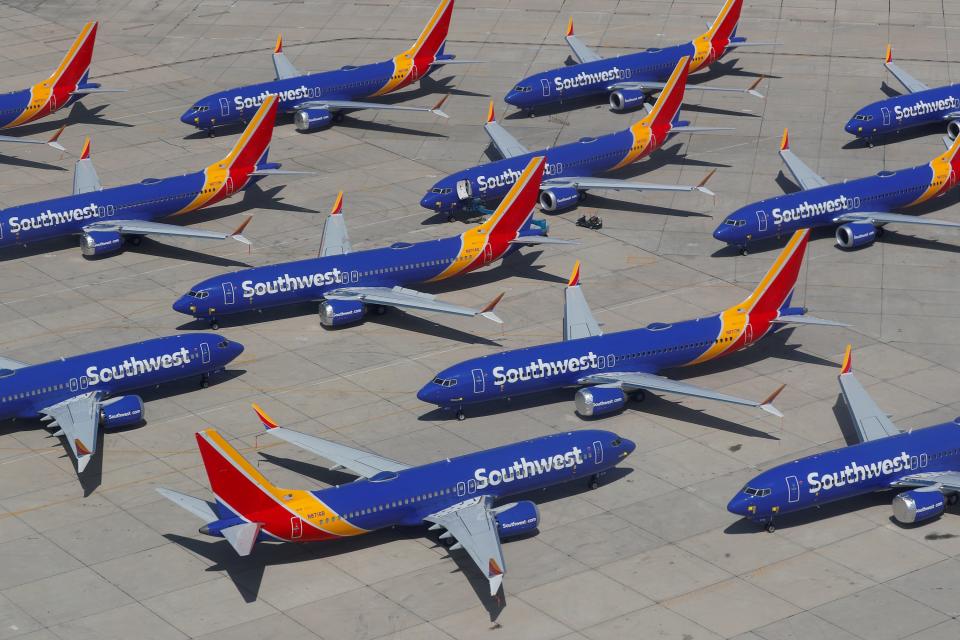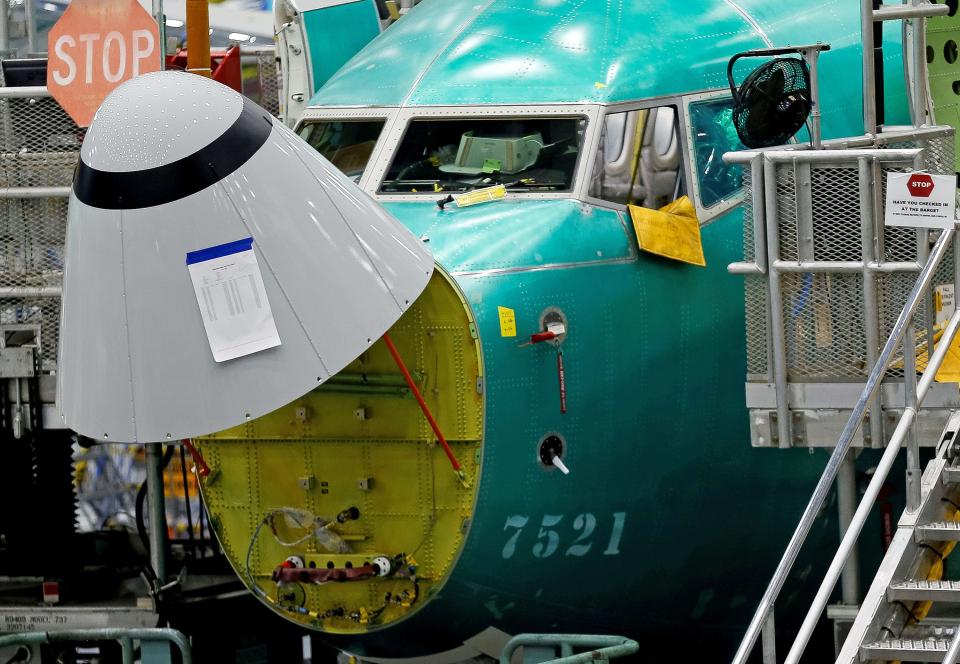The FAA could let the Boeing 737 Max resume flying next month — here are all the changes airlines must make before takeoff

REUTERS/Lindsey Wasson
The FAA published its proposed changes to the Boeing 737 Max, outlining the fixes required for the plane to return to service — among the final steps before the plane can fly again.
The FAA also published a summary of its review of the plane, writing that the proposed changes will fix the problems that caused two of Boeing's flagship narrow-body jet to crash, killing a combined 346 people.
The proposed changes are subject to a 45-day public comment period, meaning the plane could return to service as soon as mid-September. Here's the list of changes the FAA wants to see.
The Boeing 737 Max has taken one of the final steps required before to returning to service, as the Federal Aviation Administration released a preliminary summary outlining its review of Boeing's fixes to the troubled plane.
The FAA on Monday issued a notice of proposed rulemaking outlining an airworthiness directive that would detail its approved updates to the 737 Max, and require airlines to implement those changes in order to return their planes to service. The Max has been grounded since March 2019, following two crashes that killed a combined 346 people.
Among the changes, 737 Max operators would be required to install a revamped software system on the plane's flight control computer, following a major redesign to the computer, and upload new software for the plane's display system. 737 Max operators would be required to use a revised flight manual, install new wiring for the plane's horizontal stabilizers, complete tests of each plane's angle-of-attack sensor system, and perform operational test flights.
The FAA also issued a preliminary summary of its review of the plane.
The proposed changes and the summary together outline, for the first time in an official public setting, the changes that FAA and Boeing safety inspectors and engineers have outlined for the plane as it inches closer to returning to service.

REUTERS/Mike Blake
Boeing completed the plane's recertification flights with the FAA in late June and early July, among the final major hurdles for the planemaker to overcome before the plane could be cleared to fly again. During the flights, Boeing and FAA engineers tested the various changes made to the jet.
In the preliminary summary, the FAA wrote that it found that Boeing's proposed changes to the Max design, along with flight crew and maintenance procedures, "effectively mitigate the airplane-related safety issues that contributed to the Flight 610 and Flight 302 accidents."
The summary added that the proposed changes "also addressed additional safety concerns beyond those identified during the accident investigations."
Once a notice of proposed rulemaking is published by the Office of the Federal Register, a 45-day public comment period is held before any final decisions are made, suggesting that the plane could be cleared to fly by mid-September.
The 737 Max has been grounded since March, 2019
The first 737 Max deadly crash, Lion Air Flight 610, plunged into the Java Sea off Indonesia in October 2018 12 minutes after takeoff, during which the pilots struggled to control the plane. The crash killed 189 people.
Although questions immediately emerged about a new flight-control system on the 737 Max — the latest iteration of Boeing's 55-year-old workhorse — the plane largely remained in service, with an emergency Airworthiness Directive issued by Boeing and the FAA warning pilots about possible control issues.

The second crash occurred in March 2019, when Ethiopian Airlines Flight 302 crashed six minutes after taking off from Addis Ababa, Ethiopia, killing all 157 on board. Within days, the plane type was grounded worldwide. On March 13, 2019, the US became one of the last countries to ground the jet.
Investigators found that both crashes were linked to the automated system, called the maneuvering characteristics augmentation system, or MCAS.
MCAS was designed to compensate for the 737 Max having larger engines than previous 737 generations. The larger engines could cause the plane's nose to tip upward, leading to a stall — in that situation, MCAS could automatically point the nose down to negate the effect of the engine size.
But the system could be activated by a faulty reading from a single angle-of-attack sensor, without any redundancies or backups. In both crashes the sensors are thought to have failed, sending erroneous data to the flight computer and, without a redundant check in place, triggering the automated system.
Although the grounding was initially expected to last a few weeks, Boeing and the FAA found additional safety hazards — eventually requiring Boeing to redesign the jet's entire flight computer rather than just the MCAS software.

Lindsey Wasson/Reuters
Numerous federal investigations are underway into the design of the jet, part of an effort to determine how it was allowed to be certified in the first place and whether there was criminal negligence behind the design.
Questions remain over whether other countries will accept the FAA's decision on the plane — an industry norm — or conduct their own recertification flights, which would represent a loss of standing for the American agency.
Boeing previously said it expected the jet to return to service in the second half of this year. Although airlines have eagerly awaited the jet's return, the collapse of travel demand due to the coronavirus pandemic has dulled the need for the added capacity.
Read the original article on Business Insider

